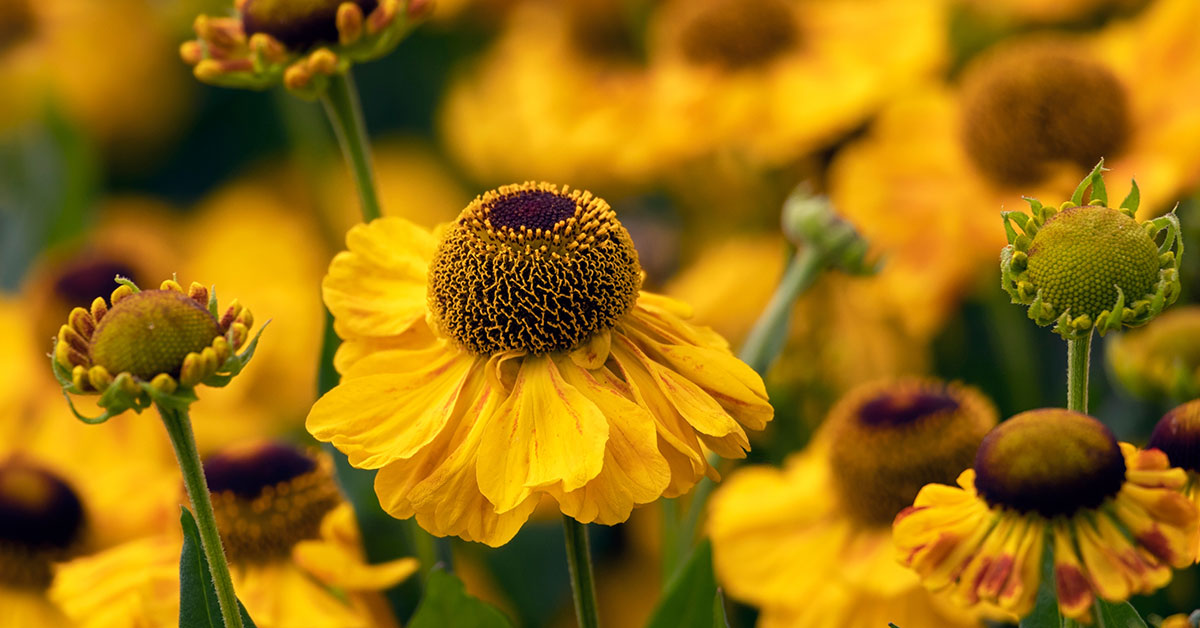Have you ever wondered how to add vibrant, late-summer hues to your garden that can persist even into the cooler autumn months? Look no further than Helenium, a genus of plants that paints a radiant palette of yellows, oranges, and reds in our gardens and parks. Growing Helenium, commonly known as Sneezeweed, isn’t just about adding aesthetic value to your space; it also contributes to the ecosystem by providing a bountiful feast for pollinators.
This article aims to provide an extensive guide to successfully growing these radiant perennials, known not only for their show-stopping color but also for their low maintenance needs and resilience against pests and diseases. Whether you are a seasoned horticulturist or a novice gardener, we will delve into the intriguing world of Helenium, covering everything from its botanical background to practical cultivation techniques and troubleshooting tips.
By integrating Helenium into your garden, you invite an enchanting spectacle of beauty and biodiversity right into your backyard. So, get ready to roll up your sleeves and let your garden flourish with the kaleidoscope of colors that is Helenium.
What is a Helenium?
Helenium is a genus of annuals and herbaceous perennials in the Asteraceae family, which is native to the Americas. The genus includes about 40 species, among which the most common are Helenium autumnale, Helenium flexuosum, and Helenium bigelovii.
These plants are often referred to as ‘sneezeweed,’ a somewhat misleading common name that originates from the former use of their dried leaves in making snuff, which was inhaled to cause sneezing that would supposedly rid the body of evil spirits. It should be noted, though, that Heleniums are not weeds and do not cause allergies like actual weed does.
Heleniums are known for their vibrant, daisy-like flowers that come in shades of yellow, orange, red, and sometimes even have a brown, velvety center cone. They typically bloom from mid-summer to fall, bringing a splash of color when many other plants have ceased blooming. They vary in height, with some varieties growing up to 5 feet tall, while others are shorter, perfect for a border or container gardening.
Heleniums are attractive to a variety of pollinators, including bees and butterflies, making them an excellent choice for an eco-friendly garden. In addition, they are low-maintenance plants, resistant to most pests and diseases, and can tolerate a variety of soil conditions, which makes them a good choice for both beginning gardeners and those looking to add resilient, colorful plants to their landscapes.
Where is Helenium native?
The Helenium genus, part of the Asteraceae family, is native to the Americas, with most species found in North America. Some species also extend into Central and South America. This genus thrives in diverse habitats across these continents, ranging from damp meadows and woodland edges to prairies and open fields. Its robust nature and adaptability have also made it a popular choice in gardens across many different climates and regions around the world.
Helenium is widespread across the entire United States except for a few states in the far west such as Nevada and California. Helenium flexuosum, commonly known as Purplehead sneezeweed, is found in eastern states, stretching from Florida north to Maine and as far west as Texas.
However, the distribution of Helenium species can vary greatly, and some species may only be native to a few specific regions or states. Always consult local botanical guides or resources to determine the native status of specific species in your area.
Growing & Care
Location: Helenium prefers a location with full sun, although it can tolerate partial shade. It often grows well in the border of a garden, where it can receive plenty of light.- Soil: These plants prefer well-drained soil and can tolerate a wide pH range. While they can survive in poor soil conditions, they will thrive in rich, organic soil.
- Planting: Plant Helenium in spring or early summer. If you’re planting from seed, start them indoors 6-8 weeks before the last frost date. If you’re transplanting seedlings or mature plants, space them about 18 to 24 inches apart to allow for growth.
- Watering: Water Helenium regularly, especially in the first year as they establish their root system. While established plants are somewhat drought-tolerant, they prefer consistent moisture.
- Feeding: Apply a balanced, slow-release fertilizer in the spring to promote strong growth. You can also amend your soil with compost or other organic matter to enhance soil fertility.
- Pruning: To encourage bushier growth and more flowers, pinch back the growth tips in the spring before the plant starts to bud. Cut back the stems to ground level in the fall or early spring.
- Dividing: Helenium plants should be divided every few years to maintain their vigor. The best time to do this is in early spring before new growth begins, or in the fall after blooming has finished.
- Pest and Disease Control: Heleniums are generally pest-resistant, but watch out for slug and snail damage. Diseases are rare but include powdery mildew and leaf spot. Both can be managed with good air circulation, proper watering, and use of fungicides if necessary.
- Support: Some taller varieties of Helenium may need staking or other forms of support to prevent them from falling over, especially in high wind areas.
Remember, even though Helenium is a sturdy and low-maintenance plant, it still benefits from regular care and attention. With proper care, Helenium can add a splash of late-season color to your garden and attract a variety of beneficial pollinators.













